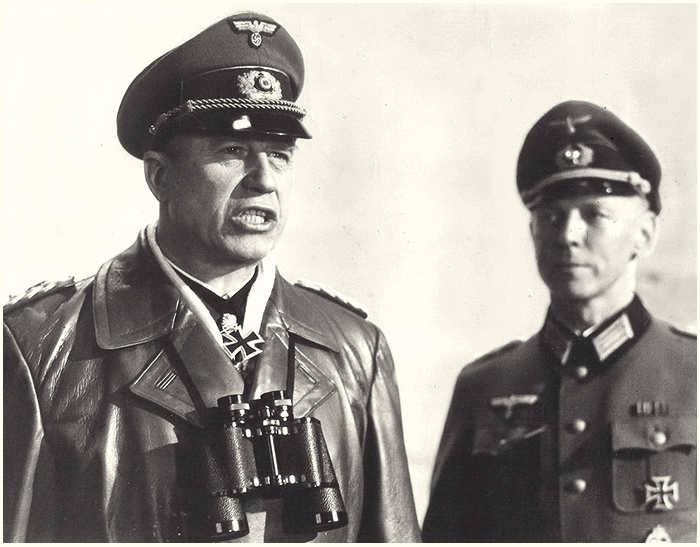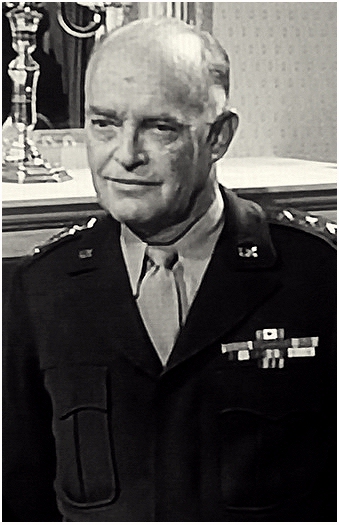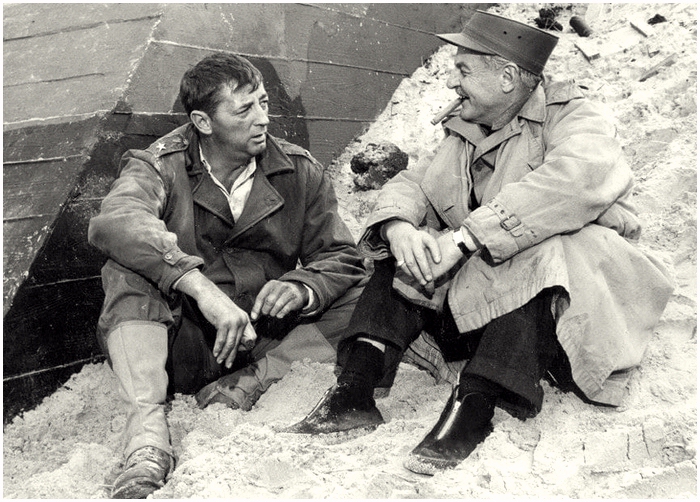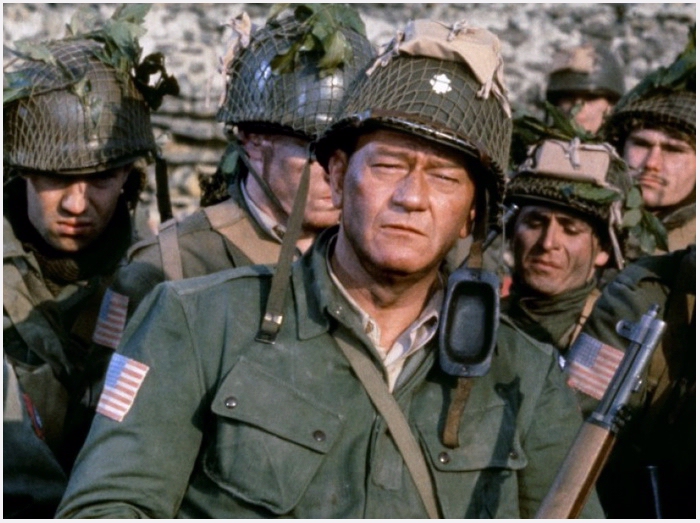This page is part of 'Battlefield
Normandy'.

OPENING CREDITS
'Believe me Lang, the first
24 hours of the invasion will be critical,…
the future
of Germany will depend on the outcome of that,…
as well
for the Allies as for Germany it shall be THE LONGEST DAY
'.
(Field Marshal Erwin Rommel, to his adjudant,
on 2 April, 1944.)

Werner Hinz as Field Marshal Erwin Rommel
OPENING CREDITS
When Cornelius Ryan's book 'The Longest Day' climbs
on the bestseller list, Darryl F. Zanuck decides that
the story must be made as a motion picture.
Unfortunately the rights to the book are already sold to the
French producer Raoul Levy. But Zanuck doesn't gif up and, after
some negotiations, he gets the rights. He then starts the
difficult search for wartime material. Especially German
weapons are hard to find. In England they find a
captured 20 mm cannon. A couple of 50 mm anti-airguns
were secured from some bunkers near La Rochelle in
France. From a museum in London they can borrow a PIAT.
Other museums as well were willing to loan German
weapons to Zanuck. Still harder to find was rolling
material and what they found had to be restored.

Richard Burton, as Fl.Off. Richard Campbell,
a frustrated RAF pilot
In one
scene they needed some Spitfires that attacked a
German column. Through the French ex-wartime pilot, Pierre
Laureys, they rented a couple of Spitfires. Laureys restored the Spitfires
(MH415, MK297, and MK923) and flew
self a Spitfire when they shot the attack
scene, just as he did with 340 Squadron on June 6th, 1944, low and very
fast! It was fortunate for Zanuck that he did not need a
bigger armada of planes. The parachute droppings were
under a heavy base of clouds and at night. To create the
illusion, the sound effect of 'passing' planes was
enough. They built two gliders, a British Horsa
and an American Waco CG4A.
There were a couple of large
models of Lancaster bombers that were use as tow planes for gliders. They also
used post-war Skyraider planes that looked a bit like Tempest fighter bombers.

Major 'Pips' Priller (Heinz Reincke), the hot-headed German ace in a Bf 108
The German 'Luftwaffe'
consisted in the movie of two Bf 108's Taifuns, because for the
lack of the real thing. It’s a pity, everyone sees that it are not
fighter planes (in reality it were Fw 190's). But finally, the material, the costumes and the
star cast is on the set, so the shooting could begin,… of ‘The Longest Day’.
'ACTION
!'
After five minutes into ‘The Longest Day’, Field Marshal Erwin Rommel (a roll for Werner Hinz)
steps into the frame, to tell us that at this spot, Normandy, the Allies are likely to land. It
is obvious in front of a background projection. In the middle of the dialog, Rommel ‘disappears’
suddenly, while the dialog is continuing over the background projection. Was this an artistic experiment
of the producer, or a slip up during editing?
 
Left, Dwight Eisenhower and right
Henry Grace as Ike Eisenhower
Producer Zanuck asked the Supreme Commander Dwight Eisenhower if he would repeat his role in
the movie. Eisenhower was flattered and accepted. But the time, 18 years after D-Day, had taken
its toll, and despite the afford the make-up department did her best, the Ike from the past
could not be recreated. Eisenhower his part for the movie was minor, it was the action that would
be the main part, and there were just a few lines to be spoken. So, a casting was made on the set
where the set decorator Henry Grace was discovered who had a close resemblance to Eisenhower.
Grace did some stiff acting, but in comparison with some ‘gung-ho’ actors, he did a real good job.
OMAHA BEACH

With the hills of Corsica in the back, 'Omaha' is invaded,...
When we talk about 'real', the location for OMAHA Beach
was no longer useable to re-enact the American landings
over there. Fortunately for Zanuck the 6th Fleet was at
manoeuvre near Corsica. Twenty-five ships were available
for him and 1600 marines stormed the Corsican beach. The
filming became in danger when in August 1961 the
Russians put up the 'Berlin Wall'. The co-operation of
the American army was in jeopardy, the soldiers were
more eager to fight the Russians than the 'Normandy'
beach. There was even an investigation and later a
change in policy between the Pentagon and Hollywood.
Another location where a large portion of 'OMAHA' was shot, was on the island of Île de Ré.
Here is a bay, Conches des Baleines, that has a similar curve as OMAHA Beach.

The beach of Conche des Baleines from La Solitude point at Île de Ré

Robert Mitchum and Darryl F. Zanuck on 'Omaha Beach' (location: Île de Ré)
Star at Omaha Beach was Robert Mitchum as General Norman Cota. He speaks here the legendary
words ‘Rangers, lead the way’. In the real world his words would have gone lost in the terrible
noise of explosions, but there are countless eyewitness reports he spoke these words, on the beach
or at his headquarters. So it is justice that the motto for the Rangers is proudly ‘Rangers lead the way.

Left, Jeff Hunter (Fuller) and right Eddie Albert (Col. Thompson)
A ‘sidekick’ next to Mitchum is Eddie Albert in the roll of Colonel Thompson. He suggests,
to Cota, at one point to ask permission for a retreat from OMAHA Beach. Later in the movie he will die
in a ‘dramatic’ way (after he whistles, like a cowboy who is moving his cattle out), when he is hit by
a bullet. A heroes roll has Sgt. John H. Fuller (roll of Jeff Hunter) when he and his men place the
bangeloors (pipemines) at the right spot so a breakout can be made.
Ste-Mère-Eglise

The first real location were filming took place was
Ste-Mere-Eglise. This is
the location where the para-drop was reenacted of the
82nd Airborne Division. Behind the church they built a house that was on fire
during that night (the real house stood at the place
were now the museum is housed). It was one of the more
dramatic scenes from 'The Longest Day', the paratroopers
in the flickering lights of the fire who came down
around the church.

Above
the 'set' in Ste-Mere-Eglise (It realy is from the
movie),
and below the situation
today.

Actor Red Buttons plays the part of
Private John Steele. This paratrooper became hooked on
the church tower. He hung helpless for some hours and
was a witness to the horror below. It was an ordeal to film
in Ste-Mère-Eglise. Around the square at the church the set decorators made a big mess
of burning wrecks and rubble. Life size dolls, in paratrooper clothing, were hung into
trees and on to buildings. To conceal it, the large monument was covered in sandbags.

Behind the two GI's, the
monument covered in sandbags can be seen
To prevent some
uneasiness under the locals of Ste-Mère-Eglise, because of all those
German uniforms (it was just 17 years after), a
loudspeaker called out that it were all French actors
and stuntmen!

John Wayne
as Lt.Col. Benjamin Vandervoort
Star part around Ste-Mère-Eglise was given to John Wayne in the roll of Lt.Col.
Benjamin Vandervoort, commander of 2nd Battalion, 505 PIR of the 82ste Airborne Division.
Charlton Heston had his eyes on this part, but it went at last to Wayne.
Producer Zanuck had managed that every star actor would take just 25.000 dollar for
their appearance in the movie. But when Wayne saw a interview with Zanuck in which he
spoke of the flop Wayne had produced with the ‘The Alamo’, he was not pleased, to say
the least. If Zanuck wanted him that bad, he had to pay Wayne 250.000 dollar, and a
separate place from the rest of the credit roll. Zanuck gave in, and paid Wayne what
he had asked. This made Wayne far from popular on the set with the other actors,
and was mostly ignored by the others.
 
John Wayne as Lt.Col. Vandervoort,
right the real Vandervoort
(find the differences,...)
Lt.Col. Vandervoort broke his left ankle during the jump over Normandy.
As you watch the movie, you may notice that John Wayne has broken his wrong ankle,…
his right! Wayne plays his part as he plays all his parts in westerns, a slow moving
caricature, who
can conquer the whole world. First of all, a dramatic gesture with his arms, and then
a ‘John Wayne’ one-liner, such as 'go on,..'. Wayne his name was separated on the credits,
and appears way down below (but Zanuck kept his promise to Wayne).

The 'cricket' was not used by the 82nd Airborne Division
(Steve Forrest (Captain Harding) achter John Wayne)
A returning detail in the movie is the use of the 'cricket',
a toy used by the 101st Airborne Division during their jump into Normandy. The use of it by the men under
Lt.Col. Vandervoort, of the 2nd Battalion, 505th PIR, 82nd Airborne is fabricated, and not true.
In an 'after action report' can be read:
'The cricket signal was the most helpful instrument in the built-up (of the 101st AD)'. Waarbij als voetnoot wordt aangehaald:
'In the same operation 82nd Div did not use the cricket. Its officers said it was an 'amateur's device' and not needed
by battle-trained paratroops' (the 82nd Div. had fought on Sicilië and on the mainland of Italy. For the
101st Division it was their first action. The picture above is far from correct,...
CLICK BELOW TO MOVE TO PEGASUS BRIDGE
|